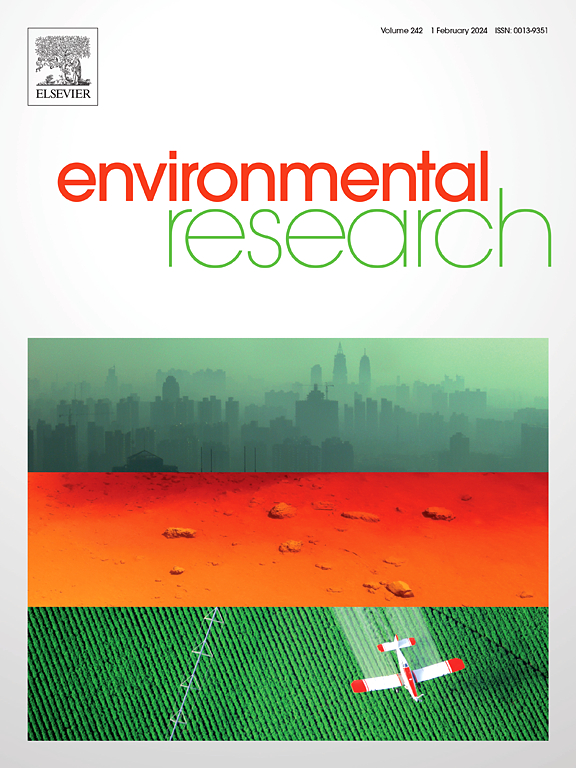Thermophilic degradation of sulfamethazine by Geobacillus sp. S-07: pathway and mechanism
IF 7.7
2区 环境科学与生态学
Q1 ENVIRONMENTAL SCIENCES
引用次数: 0
Abstract
Biodegradation is crucial for the removal and remediation of sulfonamide antibiotic (SA) contamination. Comprehensively understanding the thermophilic degradation mechanism is essential for the application of SA-biodegrading isolates in engineered systems, such as composting. In this study, we explored the thermophilic biodegradation mechanism of Geobacillus sp. S-07 on sulfamethazine (SMZ). Targeted metabolite analysis unveiled that strain S-07 effectively detoxifies SMZ by modifying the amino moiety and disassembling the sulfonamide bridge moiety. By integrating genomic and proteomic analysis, enzymes potentially involved in the SMZ biotransformation were further proposed, including an adenine deaminase, a dimethylsulfone monooxygenase, and a putative heme-containing peroxidase. Genomic analysis indicated that S-07 carries five antibiotic resistance genes, presenting a low mobility in horizontal transfer, implying its low resistance pollution risk in bioremediation application. This study offers novel insights into the thermophilic SA biodegradation mechanism, and provides biological resources for the development of thermophilic bioremediation technologies aimed at enhanced SA removal.
Geobacillus sp. S-07嗜热降解磺胺乙嗪的途径与机制
生物降解对于磺胺类抗生素(SA)污染的去除和修复至关重要。全面了解嗜热降解机制对于sa生物降解分离物在工程系统(如堆肥)中的应用至关重要。本研究探讨了Geobacillus sp. S-07对磺胺乙嗪(SMZ)的嗜热降解机理。目标代谢物分析表明,菌株S-07通过修饰氨基片段和分解磺胺桥片段有效解毒SMZ。通过整合基因组学和蛋白质组学分析,进一步提出了可能参与SMZ生物转化的酶,包括腺嘌呤脱氨酶、二甲基砜单加氧酶和假定的含血红素过氧化物酶。基因组分析表明,S-07携带5个抗生素耐药基因,在水平转移中流动性较低,表明其在生物修复应用中的抗性污染风险较低。本研究为研究嗜热性SA生物降解机理提供了新的思路,并为开发旨在增强SA去除的嗜热性生物修复技术提供了生物资源。
本文章由计算机程序翻译,如有差异,请以英文原文为准。
求助全文
约1分钟内获得全文
求助全文
来源期刊

Environmental Research
环境科学-公共卫生、环境卫生与职业卫生
CiteScore
12.60
自引率
8.40%
发文量
2480
审稿时长
4.7 months
期刊介绍:
The Environmental Research journal presents a broad range of interdisciplinary research, focused on addressing worldwide environmental concerns and featuring innovative findings. Our publication strives to explore relevant anthropogenic issues across various environmental sectors, showcasing practical applications in real-life settings.
 求助内容:
求助内容: 应助结果提醒方式:
应助结果提醒方式:


